Abstract
The mechanisms of moxalactam excretion were studied by stop-flow analysis in dogs, monkeys, and rabbits. In dogs, the amount of moxalactam excreted in the urine was almost equal to that estimated by glomerular filtration. There was no specific moxalactam peak corresponding to the p-aminohippuric acid (PAH) peak in the stop-flow patterns of the dogs. The PAH peak disappeared with administration of probenecid, but the moxalactam stop-flow pattern showed no change. In monkeys, no specific moxalactam peak corresponding to the PAH peak could be detected. In the stop-flow pattern of the rabbit, the peak moxalactam concentration corresponded with that of PAH and disappeared with probenecid. These results suggest that in dogs and monkeys renal excretion of moxalactam takes place mostly through glomerular filtration. In rabbits, however, there is a small renal tubular secretory component added to the primary element, glomerular filtration. These observations point to differences in the mechanisms of moxalactam excretion in different animal species.
Full text
PDF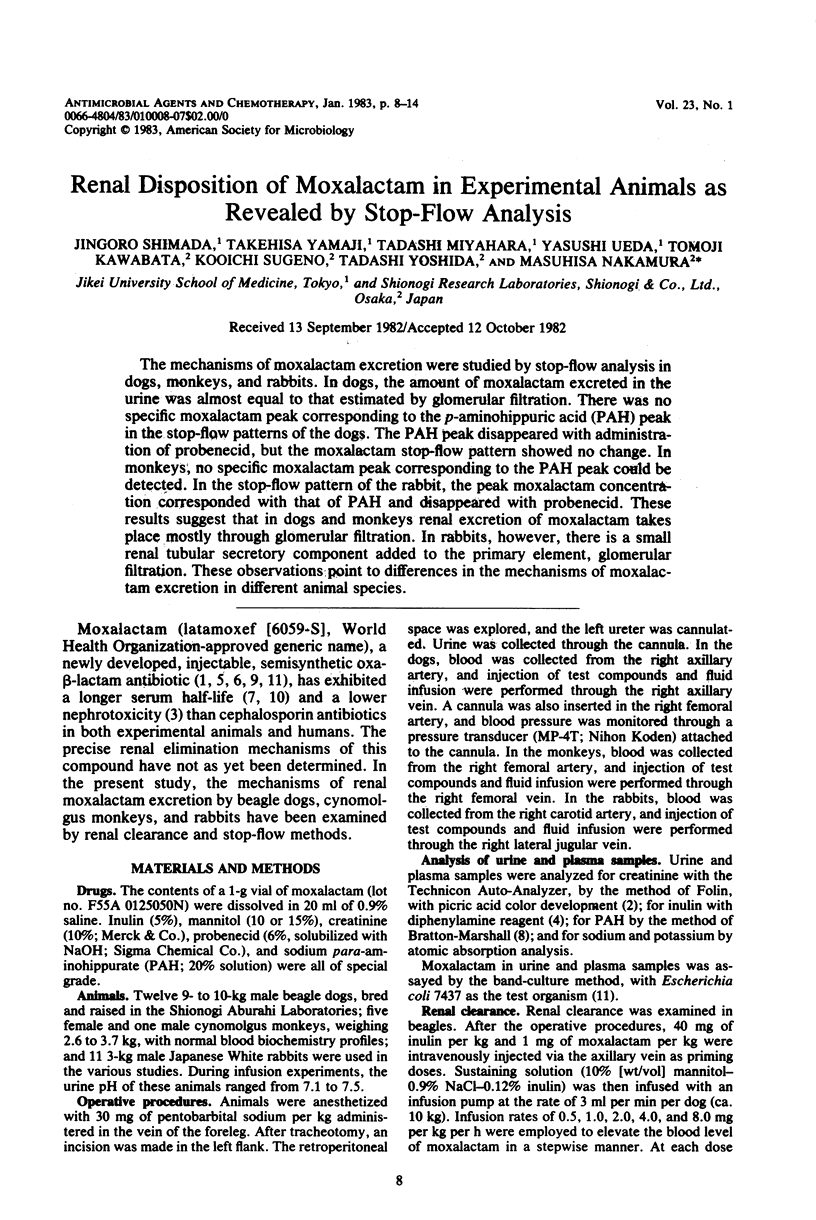
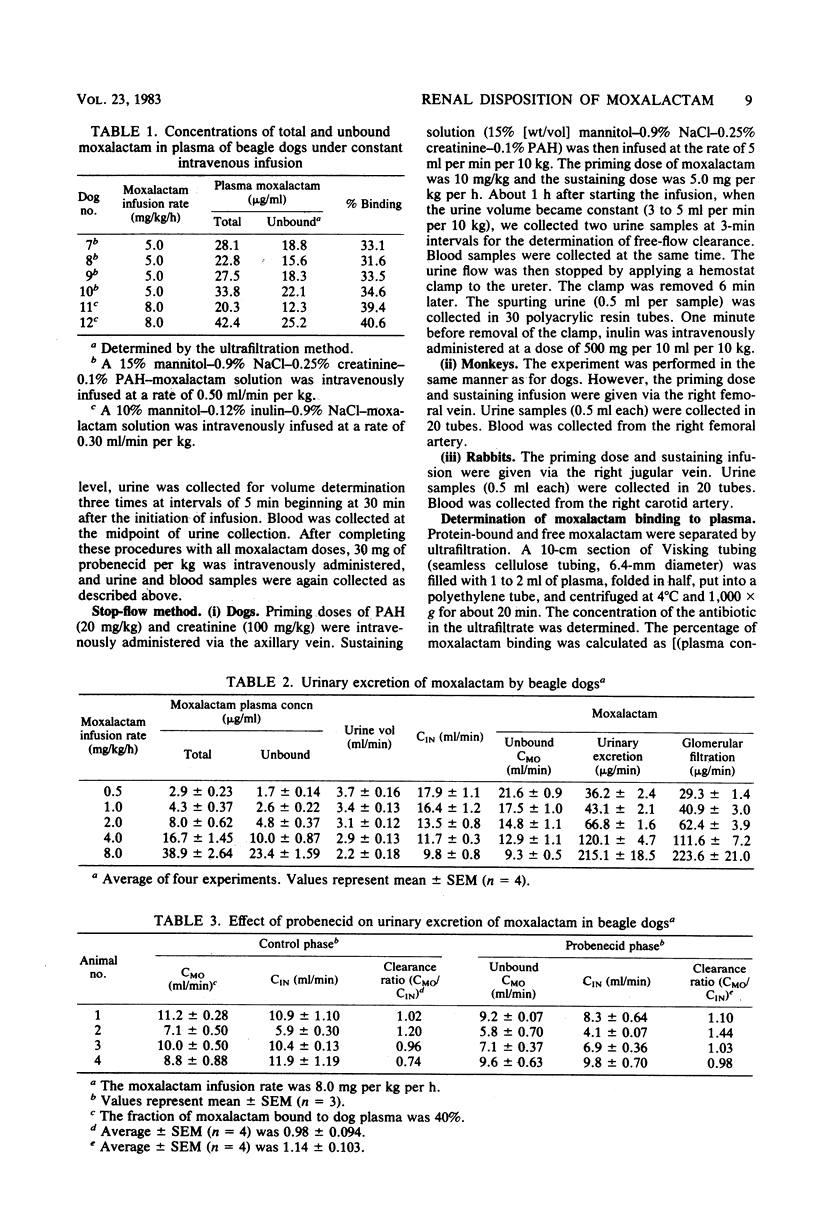
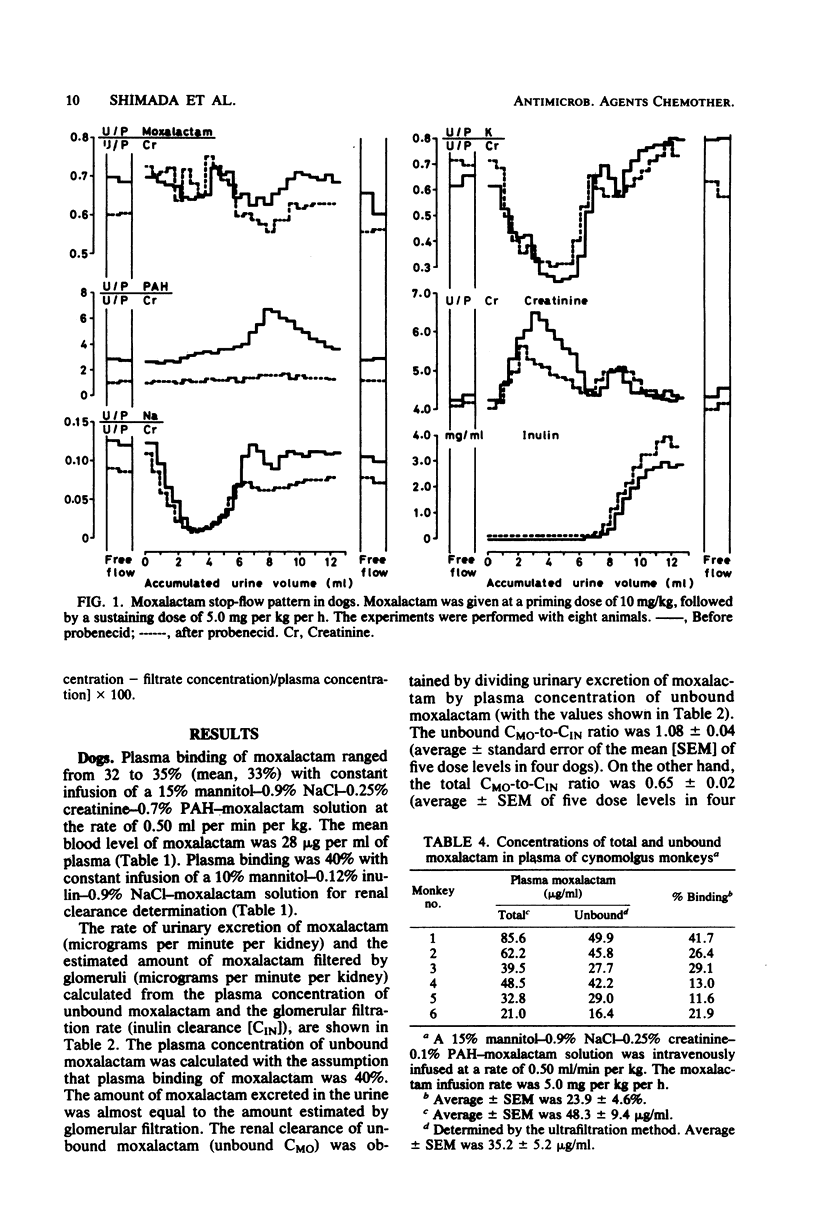
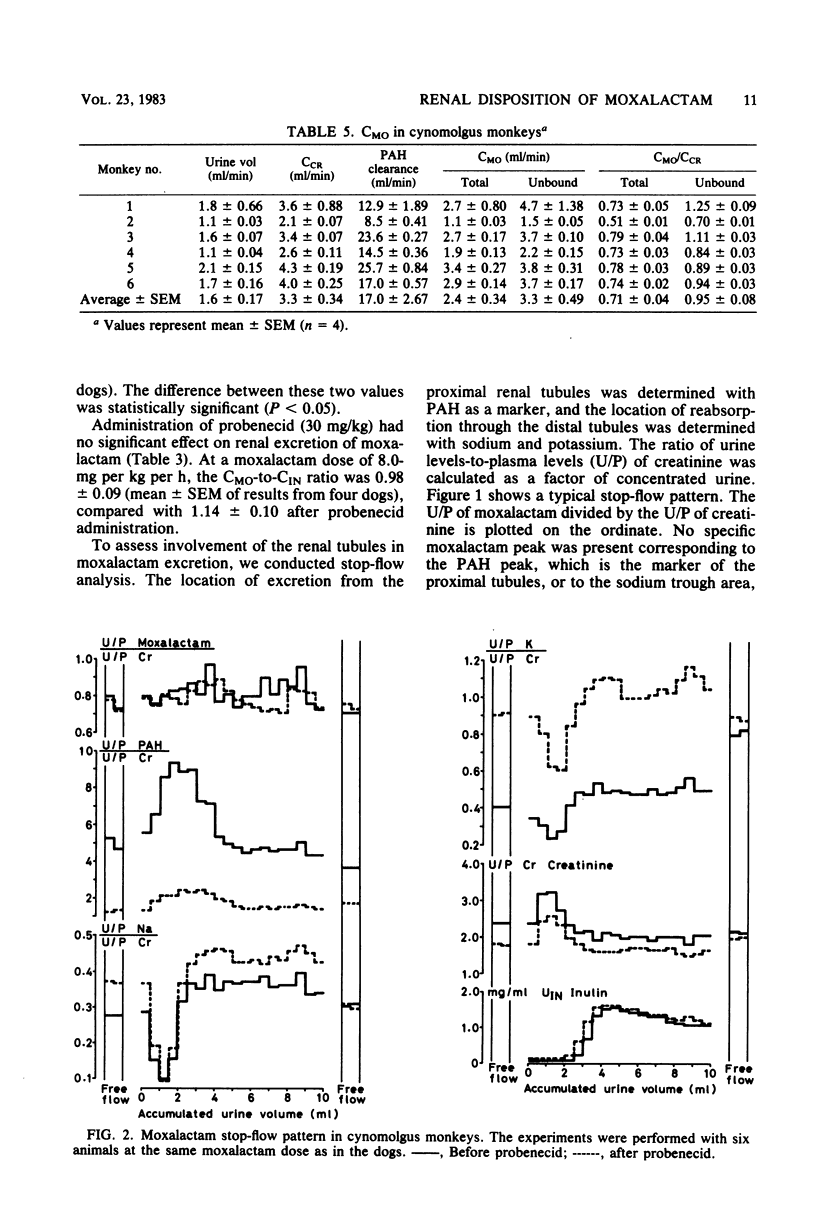
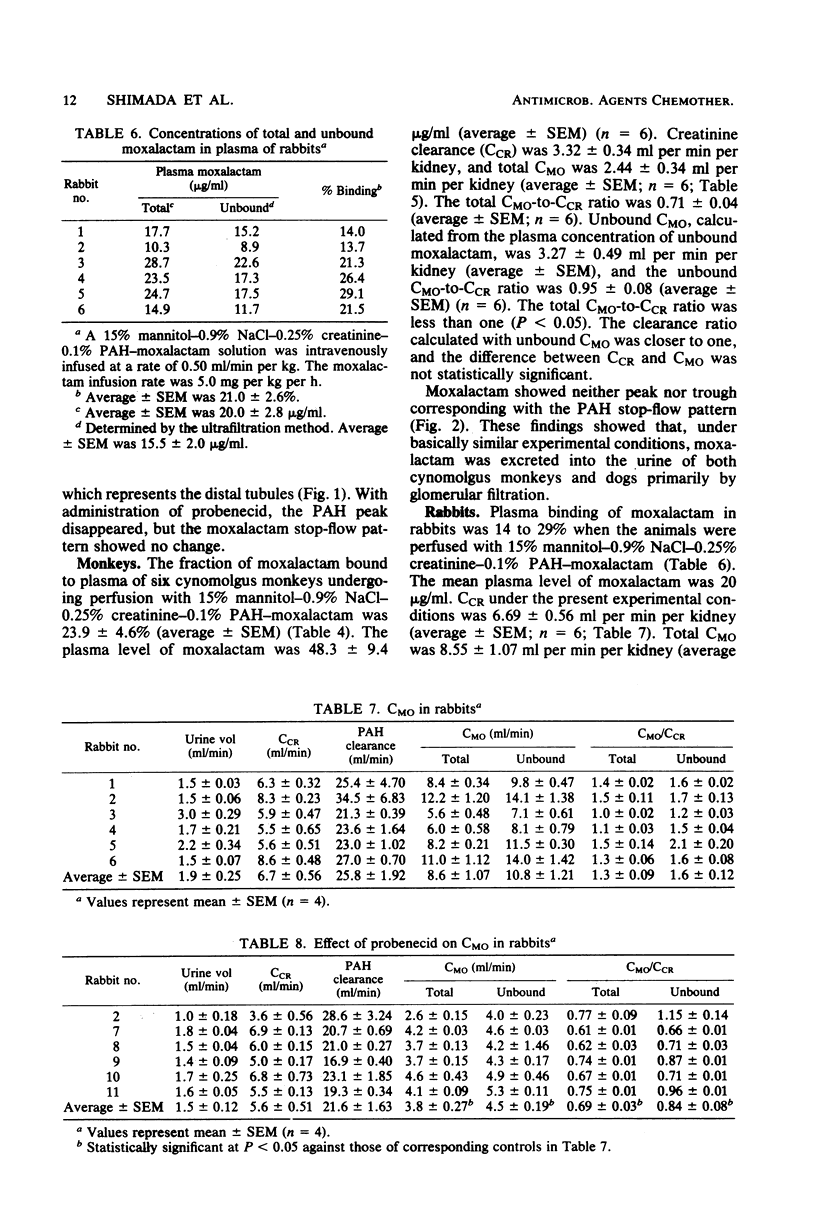
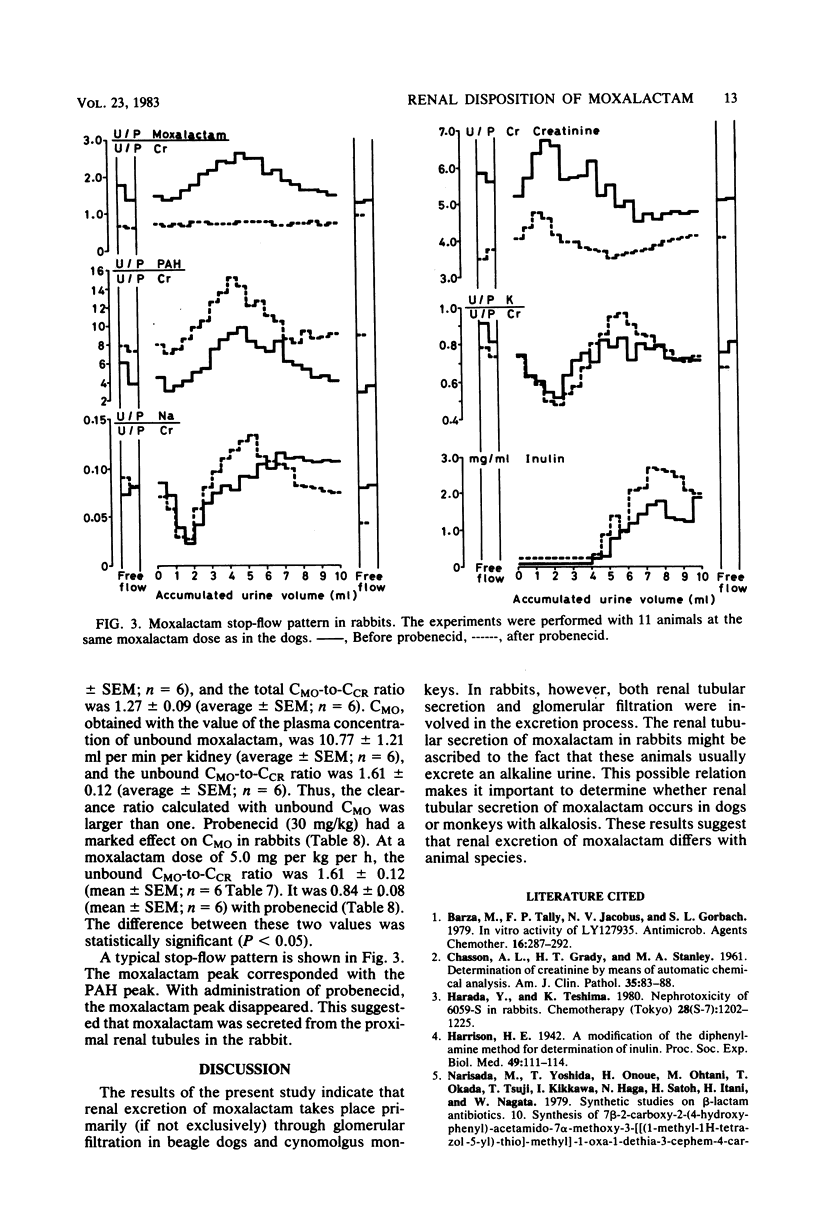
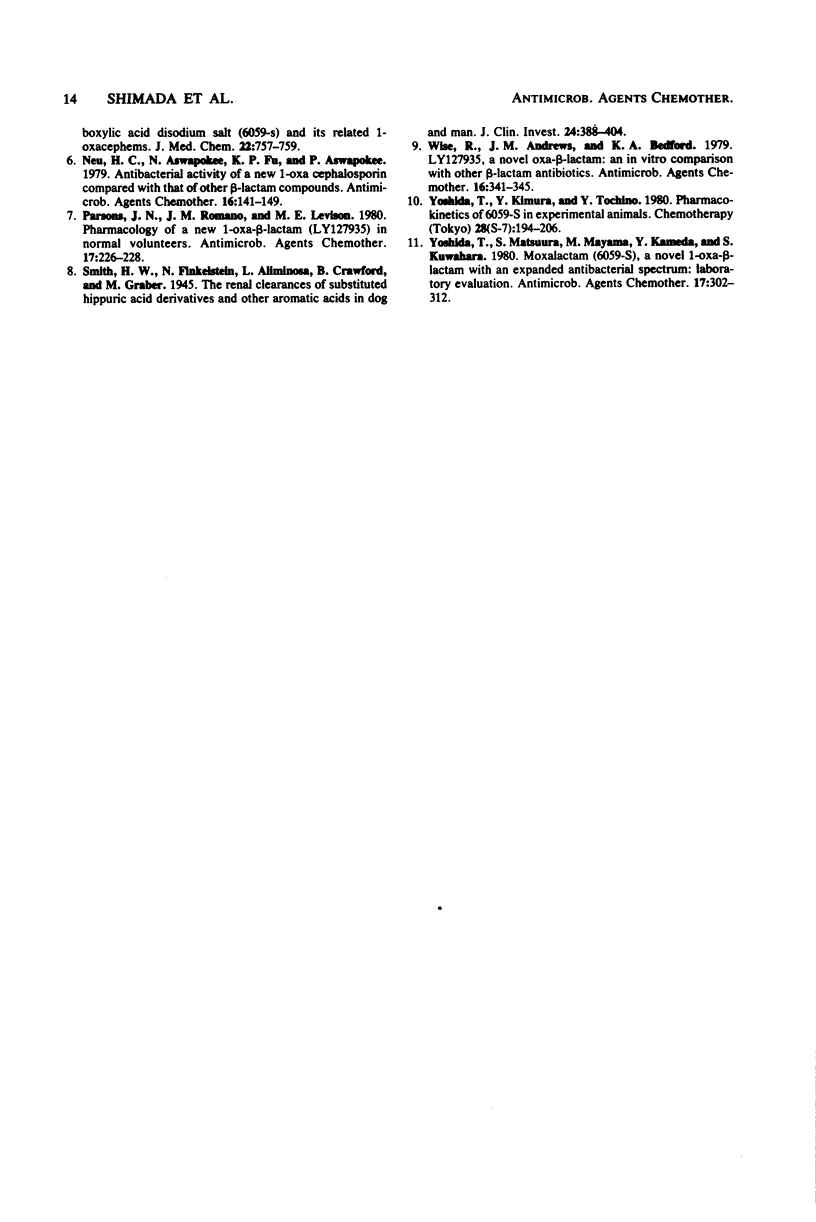
Selected References
These references are in PubMed. This may not be the complete list of references from this article.
- Barza M., Tally F. P., Jacobus N. V., Gorbach S. L. In vitro activity of LY127935. Antimicrob Agents Chemother. 1979 Sep;16(3):287–292. doi: 10.1128/aac.16.3.287. [DOI] [PMC free article] [PubMed] [Google Scholar]
- Neu H. C., Aswapokee N., Fu K. P., Aswapokee P. Antibacterial activity of a new 1-oxa cephalosporin compared with that of other beta-lactam compounds. Antimicrob Agents Chemother. 1979 Aug;16(2):141–149. doi: 10.1128/aac.16.2.141. [DOI] [PMC free article] [PubMed] [Google Scholar]
- Smith H. W., Finkelstein N., Aliminosa L., Crawford B., Graber M. THE RENAL CLEARANCES OF SUBSTITUTED HIPPURIC ACID DERIVATIVES AND OTHER AROMATIC ACIDS IN DOG AND MAN. J Clin Invest. 1945 May;24(3):388–404. doi: 10.1172/JCI101618. [DOI] [PMC free article] [PubMed] [Google Scholar]
- Wise R., Andrews J. M., Bedford K. A. LY127935, a novel oxa-beta-lactam: an in vitro comparison with other beta-lactam antibiotics. Antimicrob Agents Chemother. 1979 Sep;16(3):341–345. doi: 10.1128/aac.16.3.341. [DOI] [PMC free article] [PubMed] [Google Scholar]
- Yoshida T., Matsuura S., Mayama M., Kameda Y., Kuwahara S. Moxalactam (6059-S), a novel 1-oxa-beta-lactam with an expanded antibacterial spectrum: laboratory evaluation. Antimicrob Agents Chemother. 1980 Mar;17(3):302–312. doi: 10.1128/aac.17.3.302. [DOI] [PMC free article] [PubMed] [Google Scholar]


